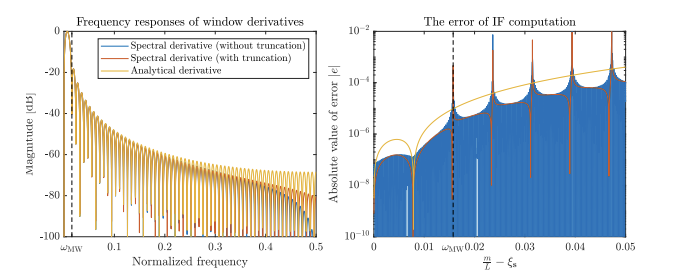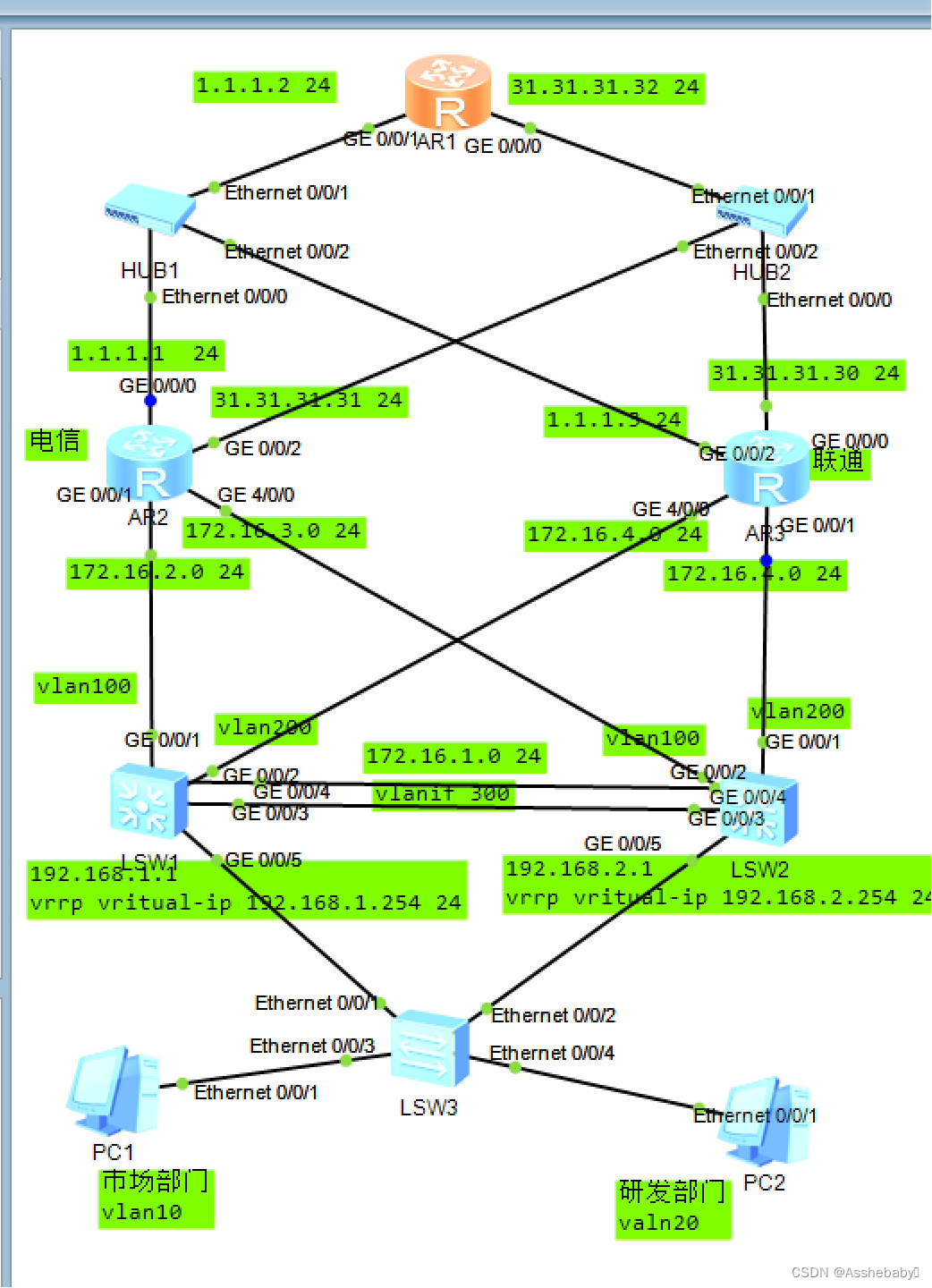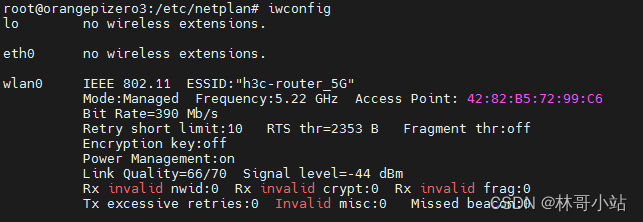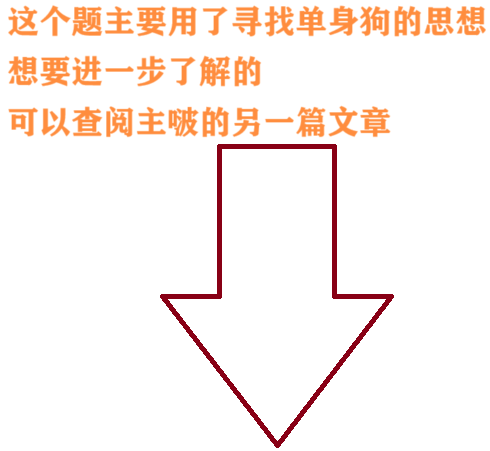《数据结构、算法与应用C++语言描述》-队列的应用-电路布线问题
问题描述
在 迷宫老鼠问题中,可以寻找从迷宫入口到迷宫出口的一条最短路径。这种在网格中寻找最短路径的算法有许多应用。例如,在电路布线问题的求解中,一个常用的方法就是在布线区域设置网格,该网格把布线区域划分成nxm个方格,就像迷宫一样(如图 9-12a 所示)。一条线路从一个方格 a 的中心点连接到另一个方格 b 的中心点,转弯处可以采用直角,如图 9-12b 所示。已经有线路经过的方格被“封锁”,成为下一条线路的障碍。我们希望用a 和 b之间的最短路径来布线,以减少信号的延迟。
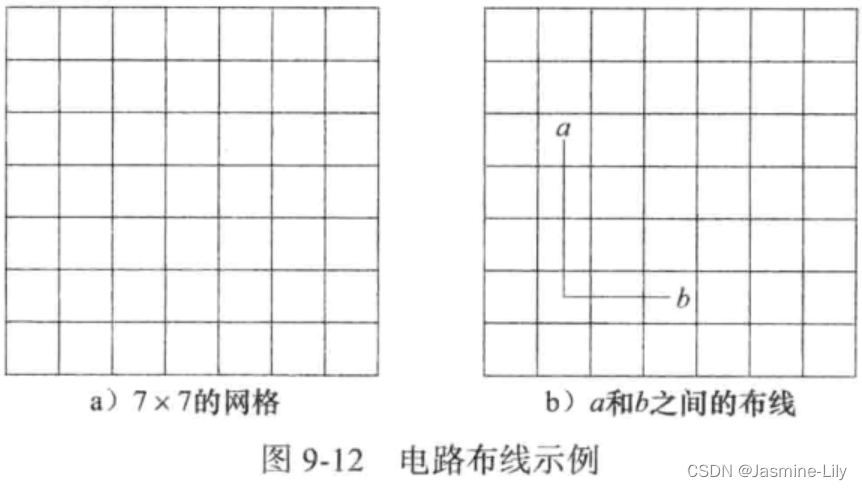
求解策略
a和b之间的最短路径需要在两个过程中确定。一个是距离标记过程,另一个是路径标记过程。在距离标记过程中,先从位置a开始,把从a可到达的相邻方格都标记为1(表示与a相距为1),然后把从编号为1的方格可到达的相邻方格都标记为2(表示与a相距为2)。这个标记过程继续下去,直至到达b或者没有可到达的相邻方格为止。图9-13a 显示了这种搜索过程的结果,其中 a=(3,2),b=(4,6)。图中的阴影部分是被封锁的方格。
一旦到达 b,b 的编号便是 b 与 a之间的距离(在图 9-13a 中,b上的标号为 9)。距离标记过程结束之后,路径标记过程开始。从方格 b 开始,首先移动到一个其编号比b的编号小1的相邻方格上。在图9-13a中,我们从b移到方格(5,6)。接下来,从方格(5,6)移到比当前编号小 1 的相邻位置上。重复这个过程,直至到达 a 为止。在图 9-13a 的例子中,从(5,6),然后移到(6,6)、(6,5)、(6,4)、(5,4),等等。图 9-13b 给出了所得到的路径,它是(3,2)和(4,6)之间的最短路径。注意,最短路径不是唯一的,(3,2)、(3,3)、(4,3)、(5,3)、(5,4)、(6,4)、(6,5)、(6,6)、(5,6)、(4,6)是另一条最短路径。
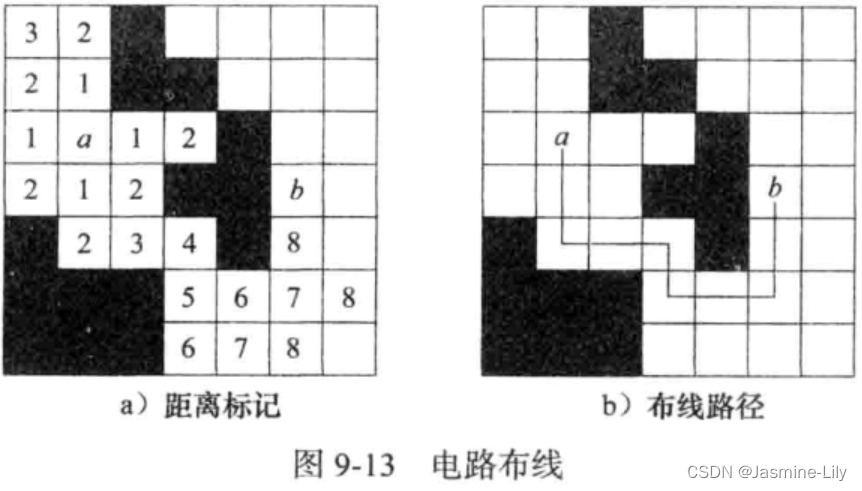
代码
#include <iostream>
#include <queue>
using namespace std;
/*用于存储迷宫地址的结构体*/
struct Position
{
int row, //行
col; //列
Position() {}
Position(int prow, int pcol):row(prow),col(pcol){}
operator int() const { return row; }
friend ostream& operator<<(ostream& out, const Position x)
{
out << "(" << x.row << "," << x.col << ")";
return out;
}
};
/*创建二维数组*/
template <class T>
bool make2dArray(T**& x, int numberOfRows, int numberOfColumns)
{
try {
//行指针
x = new T * [numberOfRows];
//为每一行分配内存
for (int i = 0; i < numberOfRows; i++)
x[i] = new int[numberOfColumns];
return true;
}
catch (bad_alloc) { return false; }
}
/*遍历二维数组*/
template<class T>
void traverse2dArray(T**& x, int numberOfRows, int numberOfColumns)
{
for (int i = 0; i < numberOfRows; i++)
{
for (int j = 0; j < numberOfColumns; j++)
{
cout.width(4);
cout << x[i][j] << " ";
}
cout << endl;
}
}
/*电路布线问题全局变量*/
int** Grid;//二维方阵
int GridSize;//方阵大小
queue<Position> path;//记录路径的队列
/*电路布线---和迷宫老鼠问题有点像*/
/*方格元素为1表示为障碍,方格元素为0表示无障碍*/
/*方格标记为2表示是起点,方格标记为大于2的整数m表示该方格距离起点m-2步*/
void inputGridQueue()//输入迷宫
{
cout << "Please enter the size of Grid-Matrix:";
while (!(cin >> GridSize))
{
cin.clear();//清空标志位
while (cin.get() != '\n')//删除无效的输入
continue;
cout << "Please enter the size of Grid-Matrix:";
}
//+2的原因是为了避免在处理内部位置和边界位置时存在差别
make2dArray<int>(Grid, GridSize + 2, GridSize + 2);
//初始化边界位置的数值
for (int i = 0; i <= GridSize + 1; i++)
{
Grid[i][0] = 1;
Grid[0][i] = 1;
Grid[i][GridSize + 1] = 1;
Grid[GridSize + 1][i] = 1;
}
//初始化迷宫
for (int i = 1; i <= GridSize; i++)
for (int j = 1; j <= GridSize; j++)
{
int positionij;
cout << "Please enter Grid[" << i << "," << j << "]:";
while (!(cin >> positionij))
{
cin.clear();//清空标志位
while (cin.get() != '\n')//删除无效的输入
continue;
cout << "Please enter Grid[" << i << "," << j << "]:";
}
Grid[i][j] = positionij;
}
cout << "The Grid = " << endl;
traverse2dArray<int>(Grid, GridSize + 2, GridSize + 2);
}
bool findPathQueue(Position start,Position end)//寻找从起点到终点的最短路径,如找到返回true,如没找到则返回false
{
if ((start.row == end.row) && (start.col == end.col))
return true;
//初始化偏移量
Position offset[4];
offset[0].row = 0; offset[0].col = 1;//右
offset[1].row = 1; offset[1].col = 0;//下
offset[2].row = 0; offset[2].col = -1;//左
offset[3].row = -1; offset[3].col = 0;//上
Position here = start;
Grid[start.row][start.col] = 2;//标记起点为2
int numOfNbrs = 4;//一个方格的相邻位置数
/*标记各个方格*/
queue<Position> q;//将需要标记的方格入栈q
Position nbr;//邻居方格
while (true)
{
//给相邻位置做标记
for (int i = 0; i < numOfNbrs; i++)
{
nbr.row = here.row + offset[i].row;
nbr.col = here.col + offset[i].col;
if (Grid[nbr.row][nbr.col] == 0)//只有方格为0时表示方格无障碍和未标记
{
Grid[nbr.row][nbr.col] = Grid[here.row][here.col] + 1;
if ((nbr.row == end.row) && (nbr.col == end.col))
break;//如果标记到终点,则标记完成
q.push(nbr);//把邻居结点插入队列,以备后面标记,也就是找邻居的邻居
}
}
if ((nbr.row == end.row) && (nbr.col == end.col))
break;//如果标记到终点,则标记完成
if (q.empty())
return false;//没有找到终点,则不可达,返回false
here = q.front();//取队首元素作为下一节点,以备标记其邻居节点
q.pop();//删除队首节点
}
/*标记完成,构造路径*/
int pathLength = Grid[end.row][end.col] - 2;
here = end;//从终点开始回溯
for (int i = pathLength - 1; i >= 0; i--)
{
path.push(here);
for (int j = 0; j < numOfNbrs; j++)//在周边寻找父节点
{
nbr.row = here.row + offset[j].row;
nbr.col = here.col + offset[j].col;
if (Grid[nbr.row][nbr.col] == i + 2)
break;
}
here = nbr;
}
path.push(start);
return true;
}
void outputPathQueue()//输出路径
{
int i = 0;
cout << "The path = ";
while(!path.empty()){
cout << path.front() << ", ";
path.pop();
}
cout << endl;
}
void routingOfCircuit()//测试函数
{
inputGridQueue();//输入迷宫
/*输入起始值点和终点*/
Position start, end;
cout << "Please enter the start node:";
while (!(cin >> start.row >> start.col))
{
cin.clear();//清空标志位
while (cin.get() != '\n')//删除无效的输入
continue;
cout << "Please enter the start node:";
}
cout << "Please enter the end node:";
while (!(cin >> end.row >> end.col))
{
cin.clear();//清空标志位
while (cin.get() != '\n')//删除无效的输入
continue;
cout << "Please enter the end node:";
}
findPathQueue(start, end);//寻找最短路径,如找到返回true,如没找到则返回false
outputPathQueue();//输出路径
}
int main()
{
cout << "电路布线问题********************" << endl;
routingOfCircuit();
return 0;
}
运行结果
C:\Users\15495\Documents\Jasmine\Work\coding\cmake-build-debug\coding.exe
鐢佃矾甯冪嚎闂********************
Please enter the size of Grid-Matrix:7
Please enter Grid[1,1]:0
Please enter Grid[1,2]:0
Please enter Grid[1,3]:1
Please enter Grid[1,4]:0
Please enter Grid[1,5]:0
Please enter Grid[1,6]:0
Please enter Grid[1,7]:0
Please enter Grid[2,1]:0
Please enter Grid[2,2]:0
Please enter Grid[2,3]:1
Please enter Grid[2,4]:1
Please enter Grid[2,5]:0
Please enter Grid[2,6]:0
Please enter Grid[2,7]:0
Please enter Grid[3,1]:0
Please enter Grid[3,2]:0
Please enter Grid[3,3]:0
Please enter Grid[3,4]:0
Please enter Grid[3,5]:1
Please enter Grid[3,6]:0
Please enter Grid[3,7]:0
Please enter Grid[4,1]:0
Please enter Grid[4,2]:0
Please enter Grid[4,3]:0
Please enter Grid[4,4]:1
Please enter Grid[4,5]:1
Please enter Grid[4,6]:0
Please enter Grid[4,7]:0
Please enter Grid[5,1]:1
Please enter Grid[5,2]:0
Please enter Grid[5,3]:0
Please enter Grid[5,4]:0
Please enter Grid[5,5]:1
Please enter Grid[5,6]:0
Please enter Grid[5,7]:0
Please enter Grid[6,1]:1
Please enter Grid[6,2]:1
Please enter Grid[6,3]:1
Please enter Grid[6,4]:0
Please enter Grid[6,5]:0
Please enter Grid[6,6]:0
Please enter Grid[6,7]:0
Please enter Grid[7,1]:1
Please enter Grid[7,2]:1
Please enter Grid[7,3]:1
Please enter Grid[7,4]:0
Please enter Grid[7,5]:0
Please enter Grid[7,6]:0
Please enter Grid[7,7]:0
The Grid =
1 1 1 1 1 1 1 1 1
1 0 0 1 0 0 0 0 1
1 0 0 1 1 0 0 0 1
1 0 0 0 0 1 0 0 1
1 0 0 0 1 1 0 0 1
1 1 0 0 0 1 0 0 1
1 1 1 1 0 0 0 0 1
1 1 1 1 0 0 0 0 1
1 1 1 1 1 1 1 1 1
Please enter the start node:3 2
Please enter the end node:4 6
The path = (4,6), (5,6), (6,6), (6,5), (6,4), (5,4), (5,3), (5,2), (4,2), (3,2),
Process finished with exit code 0

